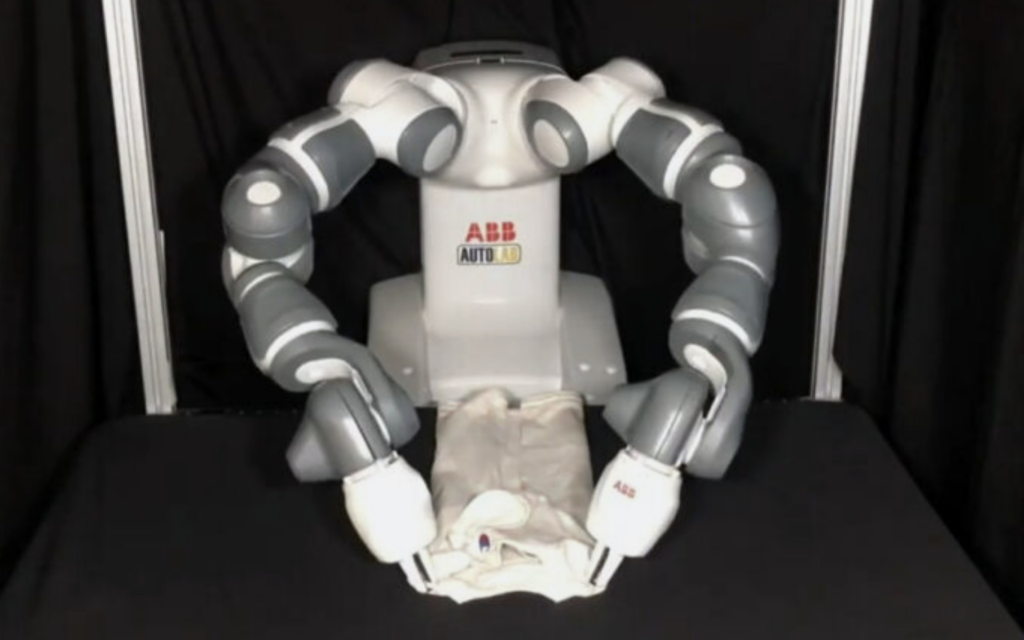There Is A Robot That Will Now Fold Your Laundry For You
Researchers at UC Berkeley developed a laundry-folding robot called SpeedFolding that can fold up to 40 articles of clothing in one hour.
This article is more than 2 years old
Mothers and all humans everywhere with a mountain of laundry waiting to be folded can now rejoice and be glad! Researchers from the AUTOLAB at UC Berkeley have developed a laundry-folding robot named SpeedFolding that is capable of folding laundry at high speeds. If this isn’t good news, then I don’t know what is.
The laundry-folding robot is loaded with technology, allowing it to fold up to 40 pieces of laundry in just one short hour. SpeedFolding uses machine vision, industrial robot arms, and a technology called BiManual Manipulation Network to fold each piece of laundry. Not only does the robot fold the laundry it does it in a way that is nice and neat.

Source: AUTOLAB
One of the challenges that have plagued developers for a laundry-folding robot is the fact that it has been extremely difficult to get the robot to fold the pieces of laundry if a way that is effective and reliable. SpeedFolding has proven to be both effective and reliable when it comes to folding laundry. The robot can even smooth out a piece of laundry that is crumpled up.
After an extensive study of over 4,300 human and machine-based examples, the technology used in the laundry-folding robot has become reliable, with a near 100% success rate when it comes to folding the garments successfully. The robot can fold garments from all sorts of positions and use generalizing to determine the best way to fold the laundry. The system implemented into the robot essentially works as eyes to examine what state the initial piece of laundry is in and fold it accordingly.
The use of two arms in this laundry-folding robot is one major thing that sets it apart from others who have attempted to develop similar technology. The use of two arms accounts for the speed at which this robot performs. Additionally, this laundry-folding robot is equipped with gripper fingertips to improve grasping laundry that needs to be folded.
In the past, developers have only utilized a one-armed laundry-folding robot. The one-armed robot proved to be a bust as it did not effectively fold the laundry or garments. Another drawback of the one-armed prototype was that the speed at which it folded laundry was nowhere near the speed at which SpeedFolding can effectively fold.
With this new breakthrough of an effective BiManual Manipulation Network comes a major win for developers of laundry-folding robots. Extensive research and lots of trial and error have taken place to get the technology where it is today. Getting smooth and well-folded garments from a laundry-folding robot was no easy task and is definitely worth celebrating.
Though this technology of a laundry-folding robot may not be accessible for the average citizen, with a cost of nearly $60,000, it is certainly fun to think about. As the technology further develops and advances, there is certainly a possibility of household robotics being incorporated into everyday life and households across the world. Certainly, something to spark a glimmer of hope as we reluctantly sorts through our current laundry piles.









